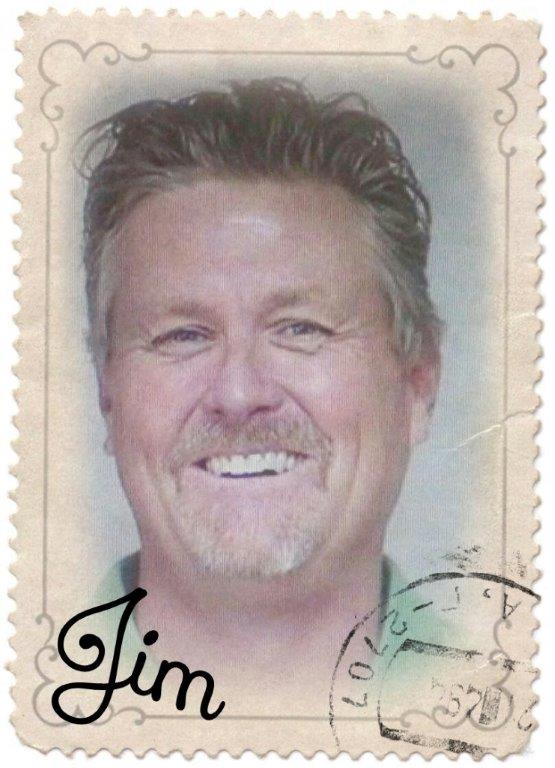The following is derived from a phone interview with Jim Kwasiborski on September 4, 2020.
Jim Kwasiborski didn’t initially set out to work in the medical field, first getting his bachelor’s degree in psychology and spending a few years as a social worker. He then transitioned into working as a business owner until sustaining a serious injury from an obstacle course race in 2014. Finding himself hospitalized for about 7 weeks, requiring 9 surgeries and sustained ventilation, Kwasiborski was profoundly moved by the care he received and inspired to help others in a similar way. He became close to a nurse there who himself had changed careers at an older age and after getting out of the hospital he explored the idea of entering the healthcare field further. A counselor at Pima Medical Institute helped Kwasiborski settle on respiratory therapy instead of nursing as a better fit for his personality, realizing that he would enjoy the responsibilities and autonomy more, as well as the flow of moving from patient to patient throughout the day. After 22 months of training, including three clinical rotations, Kwasiborski began his new career as a full-fledged respiratory therapist.
Kwasiborski’s last rotation was at Banner University Medical Center Phoenix (BUMCP), where he was so impressed by the collaborative culture and teamwork that he wanted to stay on as an employee, and there he remains to this day! Other settings in which respiratory therapists can work include nursing homes, sleep study centers, in patients’ homes, rehabilitation facilities, skilled nursing facilities, and physicians’ offices. In general, the job of a respiratory therapist is to manage the airways, which is accomplished by diagnosing and monitoring various respiratory pathologies and managing the requisite equipment used to treat them. Kwasiborski states that he arrives at the hospital a little before 6 AM in order to prepare for rounds at 6:30. They are given their assigned patients for the day and spend the shift assessing vitals, adjusting and documenting the settings on ventilators, listening to patients, suctioning secretions from the endotracheal tube, ensuring patent airways, administering breathing treatments, extubating, and making sure all the emergency equipment is in the room in case venting fails, or the patient codes or accidentally extubates themselves. If the peak pressures are too high they consult with the doctors, if they happen to be in proximity rounding, or with the nurses, who spend so much time with individual patients that they are invaluable team members. End of shift reporting is at 6 PM, after which there is usually some charting to do for another hour or two. With such long days, most respiratory therapists work only three or four days a week.
Like most of us in healthcare, Kwasiborski’s work experience has been dramatically affected by the current pandemic. Previously, he would rotate around CVICU, trauma surgery, post-surgical, and ICU, but once numbers started climbing in April and elective surgeries were canceled, he transitioned into almost exclusively working in the ICU, much of the time in COVID units. He describes how strange it was in the early days to drive to work with hardly any traffic and to navigate hospital hallways devoid of visitors. There was an eerie air of uncertainty and fear as he and others worked tirelessly to take care of the very sick, donning and doffing such extensive PPE that routine vent checks that once took five minutes now took 15 minutes. It has been devastating to care for these critically ill patients, who are deprived of loved ones by their sides, and then go home to a transformed social life in which his own friends and extended family are leery of spending time with someone on the frontlines of the pandemic.
When asked how physicians can best understand the work and role of respiratory therapists in order to optimize patient care, Kwasiborski states that communication, teamwork, and mutual respect are key. One of the reasons he loves working at BUMCP so much is that the physicians there recognize that he is in and out of a given patient’s room 10-15 times a day, and thus has a vital perspective and expertise to offer. He recently realized that this dynamic is not necessarily the norm at all institutions when a traveling respiratory therapist from New York was amazed by witnessing physicians ask the respiratory therapists for their thoughts and recommendations. That sentiment and synergy precisely embody the spirit of interprofessionalism promoted by this column, wherein all members of the healthcare team understand and respect each other’s roles, working symbiotically for the greater good of all involved.
Jessica Pirkle is a member of the Class of 2022 at the University of Arizona College of Medicine-Phoenix. She completed a BA in Spanish at ASU and worked for several years as a school teacher before switching gears and obtaining an MS in Health Care, also at ASU. When not studying the marvels of medicine, she enjoys making and eating delicious healthy food with her four children, and daydreaming about being a music festival groupie.


